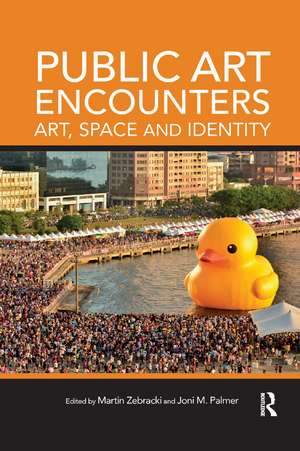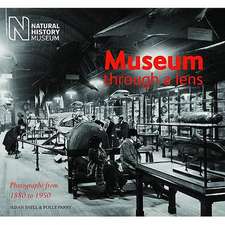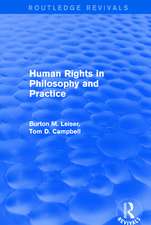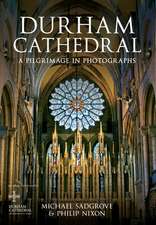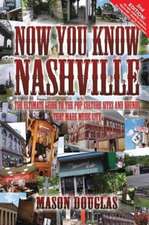Public Art Encounters: Art, Space and Identity
Editat de Martin Zebracki, Joni M. Palmeren Limba Engleză Paperback – 12 iul 2019
Public art is produced and 'lived' within multiple, interlaced and contested political, economic, social and cultural-symbolic spheres. This lively collection is a mix of academic and practice-based writings that scrutinise conventional claims on the inclusiveness of public art practice. Contributions examine how various social differences, across class, ethnicity, age, gender, religion, ability and literacy, shape encounters with public art within the ambits of the design, regeneration and everyday experiences of public spaces. The chapters richly draw on case studies from the Global North and South, providing comprehensive insights into the experiences of encountering public art via a variety of scales and realms.
This book advances critical insights of how socially practised public arts articulate and cultivate geographies of social difference through the themes of power (the politics of encountering), affect (the embodied ways of encountering), and diversity (the inclusiveness of encountering). It will appeal to scholars, students and practitioners of cultural geography, the visual arts, urban studies, political studies and anthropology.
| Toate formatele și edițiile | Preț | Express |
|---|---|---|
| Paperback (1) | 385.36 lei 6-8 săpt. | |
| Taylor & Francis – 12 iul 2019 | 385.36 lei 6-8 săpt. | |
| Hardback (1) | 1001.84 lei 6-8 săpt. | |
| Taylor & Francis – 5 sep 2017 | 1001.84 lei 6-8 săpt. |
Preț: 385.36 lei
Nou
73.74€ • 78.85$ • 61.48£
Carte tipărită la comandă
Livrare economică 17 aprilie-01 mai
Specificații
ISBN-10: 0367362104
Pagini: 256
Ilustrații: 46
Dimensiuni: 156 x 234 x 13 mm
Greutate: 0.36 kg
Ediția:1
Editura: Taylor & Francis
Colecția Routledge
Locul publicării:Oxford, United Kingdom
Cuprins
1. On Encountering Public Art
Martin Zebracki and Joni M. Palmer
PART 1: POWER
2. Subverting Surveillance: Power and Incivility in Public Transit Art
Martha Radice and Brenden Harvey
3. ‘Awaken the Dragon’: Participatory Art-making and the Grassroots in Authoritarian Singapore
Jason Luger
4. The Construction of Post-Communist Ideologies and Re-branding of Budapest: The Case Study of Statue Park Museum
Paul Clements
5. Sustainable Influences of Public Art: A View on Cultural Capital and Environmental Impact
Cameron Cartiere and Ashley Guindon
PART 2: AFFECT
6. Shaping Subjects, Connecting Communities, Imagining Futures? Critically Investigating Play Your Place
Harriet Hawkins and Ruth Catlow
7. The Production of Temporary Public Space: Site-specific Installation and ‘Vital Materialities’
Gwen MacGregor
8. ‘All Your Drains Belong to Us’: Young People and the Non-Representational Geographies of Public Art in Drain Tunnels
Candice Boyd
PART 3: DIVERSITY
9. Mobilising the ‘Right to Remain’ in Vancouver’s Paueru-gai: An Art-based Participatory Research Intervention
Aaron Franks, Jeff Masuda, Audrey Kobayashi and the Right to Remain Community Fair Team
10. The Art of (Re)crossing the Border: The Border Farm Project in Maroi, South Africa
Pauline Guinard
11. The Birmingham Surrealist Laboratory: Unlocking Community and the Avant-Garde in a Super-Diverse City
Saskia Warren and Stephen Forcer
12. A Cybergeography of Public Art Encounter: The Case of Rubber Duck
Martin Zebracki
Afterword
13. An Artist-Geographer’s Lens
Andrew Gorman-Murray
Notă biografică
Joni M. Palmer is an Adjunct Associate Professor in the Department of Geography and Environmental Studies and the Community and Regional Planning Program at the University of New Mexico, USA. Her professional life has covered a blend of practice and academia across arts and cultural planning over the past 25 years.
Recenzii
– Phil Hubbard, Professor in Urban Studies, King’s College London, UK
'By analysing specific public art projects through the frames of "power (the politics of encountering), affect (the embodied ways of encountering) and diversity (the inclusiveness of encountering)" this invitational anthology incorporates a multiplicity of disciplines - anthropology, art, art history, aesthetics, geography, history, heritage studies, performance and media studies, and sociology, among others – using a variety of productive methodologies. International in scope, its projects are located in many areas not typically covered in the existing literature: Birmingham (England), Budapest, London, Melbourne, Saskatchewan, Singapore, South Africa, Toronto, Vancouver, and Zimbabwe. This volume provides a range of essential tools for considering how public art has been and continues to be experienced by a multiplicity of audiences and is variously integrated into our actual and virtual spaces.’
– Harriet Senie, Professor of Art History, City College of New York, USA
‘A welcome intervention by geohumanities scholars into the contemporary debates around art and participation. Simply removing art from the gallery, and collaborating with audiences is not an answer. This collection explores the challenges of exploring the intersections between "art as politics" and "politics as art"; and the struggle inherent in situating and making sense of places, things, people, or collectives of humans and non-humans.’
– Andy C. Pratt, Professor of Cultural Economy and Director, Centre for Culture & the Creative Industries, City University of London, UK
‘Public art and its role as placemaker, identity-definer and political tool is a rich area of research and study. Zebracki and Palmer have curated an excellent collection of essays that give fresh perspective on these themes. With a focus on diversity of location and audience, of context and implementation, this is essential reading.’
– Andrew Shoben, Professor of Public Art and Computation, Goldsmiths, University of London, UK
Descriere
Public art is produced and 'lived' within multiple, interlaced and contested political, economic, social and cultural-symbolic spheres. This lively collection is a mix of academic and practice-based writings that scrutinise conventional claims on the inclusiveness of public art practice. Contributions examine how various social differences, across class, ethnicity, age, gender, religion, ability and literacy, shape encounters with public art within the ambits of the design, regeneration and everyday experiences of public spaces. The chapters richly draw on case studies from the Global North and South, providing comprehensive insights into the experiences of encountering public art via a variety of scales and realms.
This book advances critical insights of how socially practised public arts articulate and cultivate geographies of social difference through the themes of power (the politics of encountering), affect (the embodied ways of encountering), and diversity (the inclusiveness of encountering). It will appeal to scholars, students and practitioners of cultural geography, the visual arts, urban studies, political studies and anthropology.
